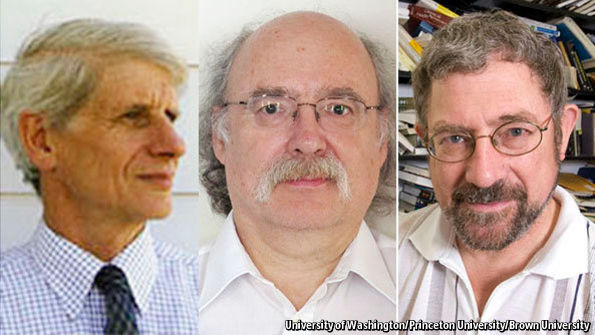The 2016 Nobel prize for physics goes to three unexpected recipients

YOU cannot have half a hole. That is the essence of topology, a branch of geometry which deals in “invariants”, such as holes, that can exist in geometric shapes only in discrete, integer numbers. This year’s Nobel prize for physics has gone to three researchers who have applied topology to materials science, and have come up with theoretical explanations about the behaviour of unusual states of matter as a result.
The winners are David Thouless of the University of Washington, in Seattle, Duncan Haldane of Princeton University, in New Jersey, and Michael Kosterlitz of Brown University, in Providence, Rhode Island. All three are products of the 20th-century “brain drain” that saw British-born researchers head west to the larger salaries and better laboratories of America.
Dr Thouless, who takes home half of the SKr8m ($930,000) prize, collaborated with Dr Kosterlitz, who shares the other half with Dr Haldane, in the 1970s, when both were still in Britain. The fruit of their collaboration was to overthrow the idea that superconductivity (a phenomenon in which the resistance of an electrical conductor vanishes, usually when it…Continue reading
Source: Economist




